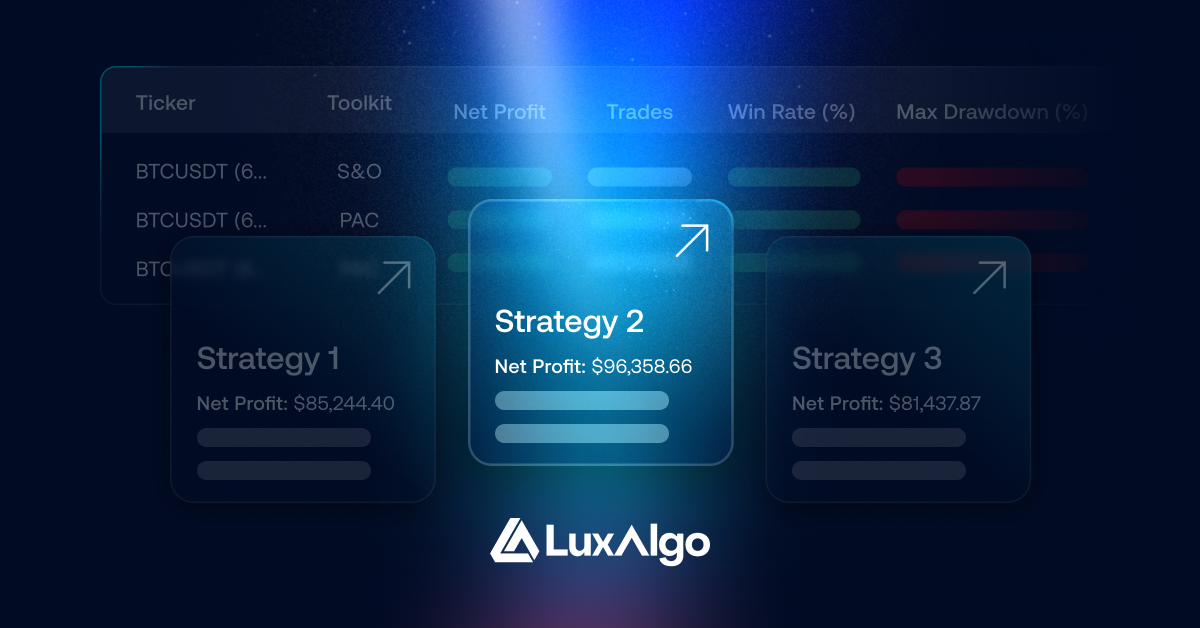Explore how sector momentum rotation combines trend analysis and momentum investing to enhance portfolio performance.
Sector momentum rotation is a strategy that combines sector rotation with momentum investing to improve portfolio performance by focusing on sectors with strong, consistent upward trends. Here's how it works and why it matters:
- What It Does: Moves capital into top-performing sectors based on momentum indicators like 12‐month price returns or 90‐day performance slopes.
- Key Benefits: Aims to outperform the market, reduce losses in downturns, and provide a rules‐based, data‐driven approach to investing.
- Who It’s For: Active traders, quantitative portfolio managers, and financial advisors seeking systematic portfolio strategies.
Quick Overview:
- Momentum Indicators: Tracks short-, medium-, and long-term trends to identify strong sectors.
- Rebalancing Frequency: Monthly or quarterly to adapt to market changes.
- Approaches:
- Long-only: Invest in strong sectors.
- Long-short: Pair strong buys with shorting weaker sectors.
- Tools: Platforms like LuxAlgo – known for providing hundreds of free trading indicators via its Library, exclusive toolkits, and an AI Backtesting Assistant on TradingView – QuantConnect, and Bloomberg Terminal help automate and optimize the strategy.
This strategy is most effective in trending markets and requires careful risk management through automated exit triggers and trend validation.
Understanding & Capitalizing on Sector Rotation
Strategy Mechanics
Traders leverage sector momentum to guide decisions, relying on systematic methods to measure market trends and allocate investments. The strategy's success hinges on accurate calculations and clear trading rules.
Measuring Sector Momentum
Momentum measurement is key to picking the right sectors. Popular methods include analyzing the 90‐day slope of sector performance relative to benchmarks like the S&P 500[1] or tracking the 12‐month price return of sector ETFs[2]. A multi‐period approach examines trends across different timeframes:
| Timeframe | Focus |
|---|---|
| 1-3 Months | Short-term trends |
| 6-9 Months | Medium-term momentum |
| 12 Months | Long-term strength |
This layered analysis helps capture emerging, developing, and mature trends, aligning with the broader market dynamics discussed earlier.
Position Sizing and Timing
Position sizing can follow either an equal distribution model or be weighted based on momentum strength. Rebalancing is typically done monthly for quicker adjustments or quarterly to manage costs. These allocation methods prepare the ground for execution strategies.
Trading Approaches: Long vs. Long-Short
Sector rotation strategies generally fall into two categories:
- Long-only: Focuses on investing in sectors showing strong performance.
- Long-short: Combines buying strong sectors with shorting weaker ones.
Both approaches prioritize liquid assets that respond well to market trends.
These mechanics establish the foundation for assessing the strategy's performance, which will be explored in the next section.
Results and Risk Analysis
Looking at historical data, sector momentum rotation has shown strong performance. For instance, during the 2008 financial crisis, a well-timed sector rotation strategy beat the S&P 500 by 14.2% by shifting investments to more stable sectors[5].
| Market Phase | Performance vs. Benchmark |
|---|---|
| Bull Market | 2-4% Higher Returns |
| Bear Market | Smaller Losses |
| Transition | Varies Based on Context |
Market Condition Impact
The effectiveness of this strategy depends heavily on market conditions. In clear, trending markets, it's easier to capitalize on momentum within leading sectors. On the other hand, volatile or sideways markets can make this approach tricky, with frequent shifts in direction creating challenges. This ties back to the idea that market inefficiencies – like the delayed recognition of sector strength – can create opportunities. However, too many rotations in volatile periods might hurt overall results[2][1].
Risk Control Methods
To manage risks effectively, consider these practices:
- Automated Exit Triggers: These provide systematic safeguards against significant losses.
- Trend Validation Before Entry: Ensures positions are taken only when trends are confirmed.
Robust risk management techniques are essential for navigating market shifts and protecting capital.
Implementation Tools
To put a strategy into action, you need the right tools. Here are three key categories to consider:
Sector Analysis Software
Professional traders often rely on high-end platforms like Bloomberg Terminal and FactSet for in-depth sector analysis. These platforms provide extensive sector-specific data and real-time analytics [2]. For individual traders, options like Morningstar Direct and S&P Global Market Intelligence offer accessible tools with sector classification systems and screening capabilities [4].
If you're looking for free resources, the Sector SPDR ETFs website is a great option. It allows you to track momentum, compare sector performance, and evaluate relative strength metrics [1].
| Platform Type | Features |
|---|---|
| Professional | Detailed data, real-time analytics |
| Mid-tier | Sector screening, classification tools |
| Free | Basic performance tracking |
These tools help apply the multi‐period momentum analysis methods discussed earlier.
AI and Automated Systems
AI-powered platforms have made sector rotation easier and more efficient. QuantConnect and Alpaca are popular choices, offering machine learning libraries and APIs tailored for sector ETF trading [6].
LuxAlgo AI Backtesting Assistant

LuxAlgo’s AI Backtesting Assistant goes beyond single-strategy testing—it empowers traders to run multiple strategies tailored for different market sectors simultaneously. With advanced AI capabilities, it fetches and backtests various strategies specific to each sector’s characteristics, whether you’re targeting short-term momentum shifts or long-term trend patterns. This multi-strategy approach allows you to fine-tune and optimize each sector’s trading plan, enhancing risk management and maximizing portfolio returns.
The assistant automatically adjusts strategy parameters based on historical performance data, offering a dynamic and data-driven way to manage sector-specific trading opportunities. To learn more about setting up and fetching strategies for different sectors, check out the LuxAlgo Backtesting Assistant documentation and the Backtesting platform page.
Summary
Strategy Benefits
Sector momentum rotation works through these four key mechanisms:
| Benefit | Description |
|---|---|
| Alpha Generation | Aims to outperform broad market indices |
| Risk Management | Helps reduce losses during market downturns |
| Rules-based Execution | Minimizes emotional bias in decision-making |
| Market Focus | Leverages opportunities in specific sector trends |
Getting Started Steps
Follow these steps to set up and execute the strategy effectively:
1. Platform Setup
Subscribe to LuxAlgo Premium/Ultimate and activate the Signals & Overlays Toolkit.
2. Strategy Configuration
Set a 12‐month momentum baseline for sector ETFs using LuxAlgo's OSC toolkit.
3. Implementation Process
Identify top-performing sectors through multi‐period momentum analysis. Use LuxAlgo’s AI Backtesting Assistant to test and refine the strategy under various market conditions.
FAQs
Is sector rotation a good strategy?
Sector rotation can deliver strong results when done correctly. For example, a study by Fidelity found that sector rotation strategies outperformed the S&P 500 by an average of 3.6% annually over 15 years [2]. But success depends on several key factors:
| Aspect | Impact |
|---|---|
| Market Phase Awareness | Crucial during shifts like moving from recession to recovery. |
| Risk Management | Needs a structured approach and constant monitoring. |
| Transaction Costs | Frequent trading can eat into overall returns. |
This strategy works best during major economic shifts, such as a recovery from a recession. Its effectiveness relies on aligning with your personal goals and understanding the current market conditions, as explained in the multi‐period momentum framework discussed earlier.
How to use sector rotation?
Momentum-based strategies often outperform traditional buy-and-hold approaches. Mebane Faber's 2004-2016 study highlighted this trend. Here are two key metrics often used:
- MACD (Moving Average Convergence/Divergence): Helps identify momentum shifts.
- Rate of Change (ROC): Measures the speed of price changes over time.
Tools like LuxAlgo's OSC toolkit can detect divergences in real time, while their AI Backtesting Assistant helps refine your strategy. These tools align with the steps outlined earlier.
For best results, quarterly rebalancing is recommended. It strikes a balance between capturing opportunities and managing transaction costs.







